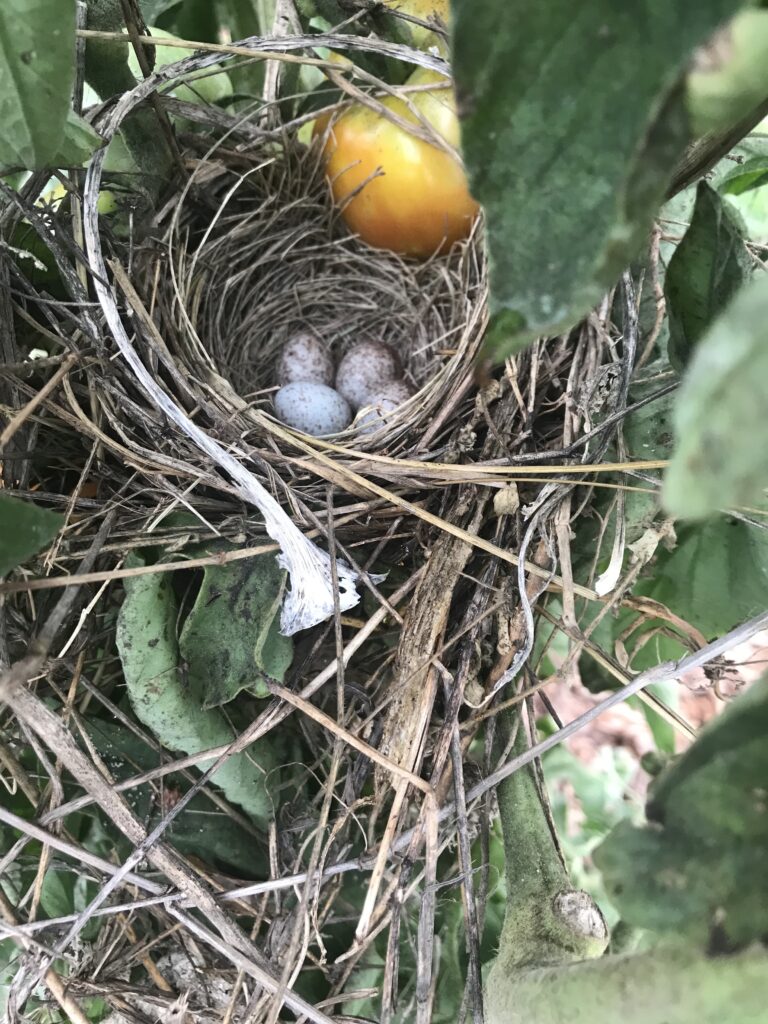The rains are back in full force. Some things stay a bit wet at the farm but it beats the alternative. Weed management is becoming a real problem task in some areas and it makes me want to try some things moving forward. The UMASS farm uses paper mulch and I would really like to give that a whirl. I have used plastic landscape fabric before and had mixed results. Managed intensively I was able to greatly reduce pests on zucchini poorly managed it increased them. The first season trying the fabric I only used it as a weed barrier which worked. There is a slight slope to my ground at home and rain was repelled off the fabric when at an angle reducing the amount of water overall that some plants received. It was very apparent between cucumbers planting through the fabric and others that were in bare soil. The bare soil planting was weedier and the fruits were damaged but prolific whereas the ones trellised and planted through fabric produced almost no fruit. Zucchini was absolutely destroyed by squash bugs that year. The squash bug uses the fabric as cover to hide from spraying or hand picking. The next season I buried the edges of the fabric and filled the space around each plant stem and the fabric hole with clay soil to seal it off. Then I covered all the plants with fabric row cover and left them covered until squash vine borers were not as much of a threat. After uncovering the plants I hand picked all the squash bugs and removed egg masses with duct tape. I would like to try a system showcased by professor Jaimie Pinero. This method also uses fabric as a weed barrier but utilizes hubbard squash as a trap crop. Between rows was planted sudangrass and a center strip of buckwheat planted in that sudangrass. The sudangrass can be mowed, does not creep into plant rows and will winter kill. The buckwheat acts as a beneficial banker plant strip to increase natural enemies and ensure pollination of the cover crop.
Squirrels have discovered that tomatoes are edible and have been rampaging in the greenhouses. I even saw a squirrel dragging a half eaten ripe tomato across the parking lot one morning when pulling in. As I grow a base understanding of farmscaping I have been considering how I would farmscape to increase the coyote presence on the farm. Coyotes have cough 2 rabbits in the high tunnels and several outside. If they could be attracted more, maybe the squirrels would be less bold. There is a pair of hawks that live on the farm as well as a pair of vultures and house wrens. The hawks certainly must do some services for the farm and the vultures clean up all the predator messes. The house wren pair are now raising their second brood and we all have noticed that the pair prefer to collect caterpillars. Any time I can make out what a parent is bringing the chicks it is a caterpillar. If we could promote house wrens with a few extra bird baths, a few wren houses and maybe even a mealworm feeder for lean times we might be able to increase the population of these caterpillar eaters.
I have a growing interest in trying out some non wild animal friends on a farm as well. Dogs are on the top of my list. They do the most on the farm for pest control. I love dogs but just haven’t had the time and money commitment to invest in raising one. Other than that, runner ducks and chickens moved around could do a lot for pest control. Chinese geese eat weeds between rows and I would love to try them in a situation where they would not be able to eat the cash crop. Such as allowing them to spend time in little runs under tomatoes and trellised crops or in an orchard. A pet goat tethered in different areas around the farm might also be a good weed eating fertilizer maker as well.
